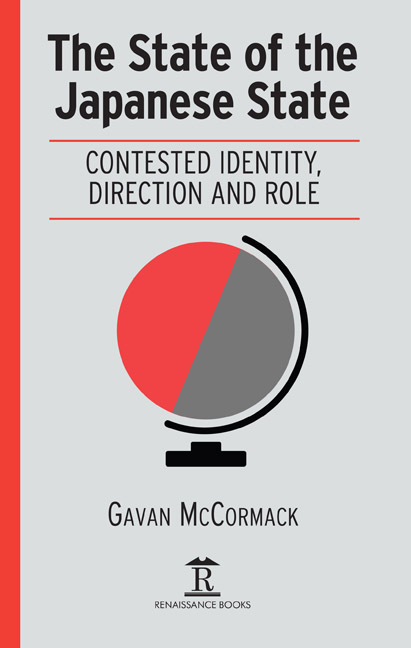Book contents
- Frontmatter
- Contents
- Preface
- Chapter 1 The Improbable Package
- Chapter 2 The Client State
- Chapter 3 The Client State’s Client State
- Chapter 4 Okinawa – State Violence and Civic Resistance
- Chapter 5 Around the East [China] Sea
- Chapter 6 The Construction State
- Chapter 7 The Constitutional State
- Chapter 8 The Rampant State
- Chapter 9 Conclusion
- Afterword
- Index
- Frontmatter
- Contents
- Preface
- Chapter 1 The Improbable Package
- Chapter 2 The Client State
- Chapter 3 The Client State’s Client State
- Chapter 4 Okinawa – State Violence and Civic Resistance
- Chapter 5 Around the East [China] Sea
- Chapter 6 The Construction State
- Chapter 7 The Constitutional State
- Chapter 8 The Rampant State
- Chapter 9 Conclusion
- Afterword
- Index
Summary
THE US SPONSORED system, the constitution of 1946 and the San Francisco Treaty of 1951, undoubtedly liberated Japan from fascism and militarism, but the package was problematic. Japan's contemporary problems are rooted in the contradictory “imperial democracy” formula adopted in the wake of the war, involving a tendentious combination of scapegoating, cover-up, forgetfulness and submission on Japan's part and assumption of ongoing imperial prerogative on that of the US. Both General MacArthur and Emperor Hirohito were in agreement that the Japanese people were fickle and “marked by a willingness to be led” (Hirohito in 1947) and childlike (“measured by the standards of modern civilization … a boy of twelve as compared with our development of 45 years,” as MacArthur put it in 1951), and consequently the role of the emperor should be maintained at “head” of the state (MacArthur in 1946), which in turn entailed the rewriting of history and the shifting of the emperor's wartime responsibility down to subordinates. Overall, both sides agreed that the US should retain authority over Japan, especially its security. As Hirohito put it to MacArthur in 1947, Japan's security depended on “initiatives taken by the United States, representing the Anglo-Saxons,” and Okinawa should remain under US control for as long as possible. Improbable as it may seem, clientelism's progenitor was none other than Emperor Hirohito.
Despite the regional transformation accompanying the end to colonialism, the rise and fall of the Cold War, and the rise of China, the set of treaties adopted in 1951 continues to define the strategic pattern of inter-state relations in East Asia and the Pacific. The single significant modification has been the “reversion “of Okinawa to Japanese sovereignty in 1972. That “reversion,” however, was in reality a formula for subjecting Okinawa to dual (US-Japan) subordination. The final grand touch, promised in March 2017 for the year 2020, is to be a revised or rewritten constitution, consolidating and extending the de facto “revision by interpretation” that has been the chosen tool of LDP governments and coinciding with the inauguration of a new emperor (from 2019).
This paradoxical Japanese state strives now to further reinforce military and strategic integration with the United States on an anti-China axis.
- Type
- Chapter
- Information
- The State of the Japanese StateContested Identity, Direction and Role, pp. 231 - 240Publisher: Amsterdam University PressPrint publication year: 2018

